This watermelon fraction garland is a great compare fraction worksheet. Use this fraction art and craft to explore equivalent fractions and reduce fractions.
I started making garlands, and I am now obsessed with making more! There are just so many things out there that look adorable when placed on a string and turned into a printable garland. Mostly I have been making math fractions, but I also made one on the moon phases! You can check it out on my blog: MOON PHASES CRAFT: A PROJECT TO GET KIDS EXCITED ABOUT SCIENCE
To make this adorable watermelon fraction first, read about it below. Then, check out the video to see it in action!
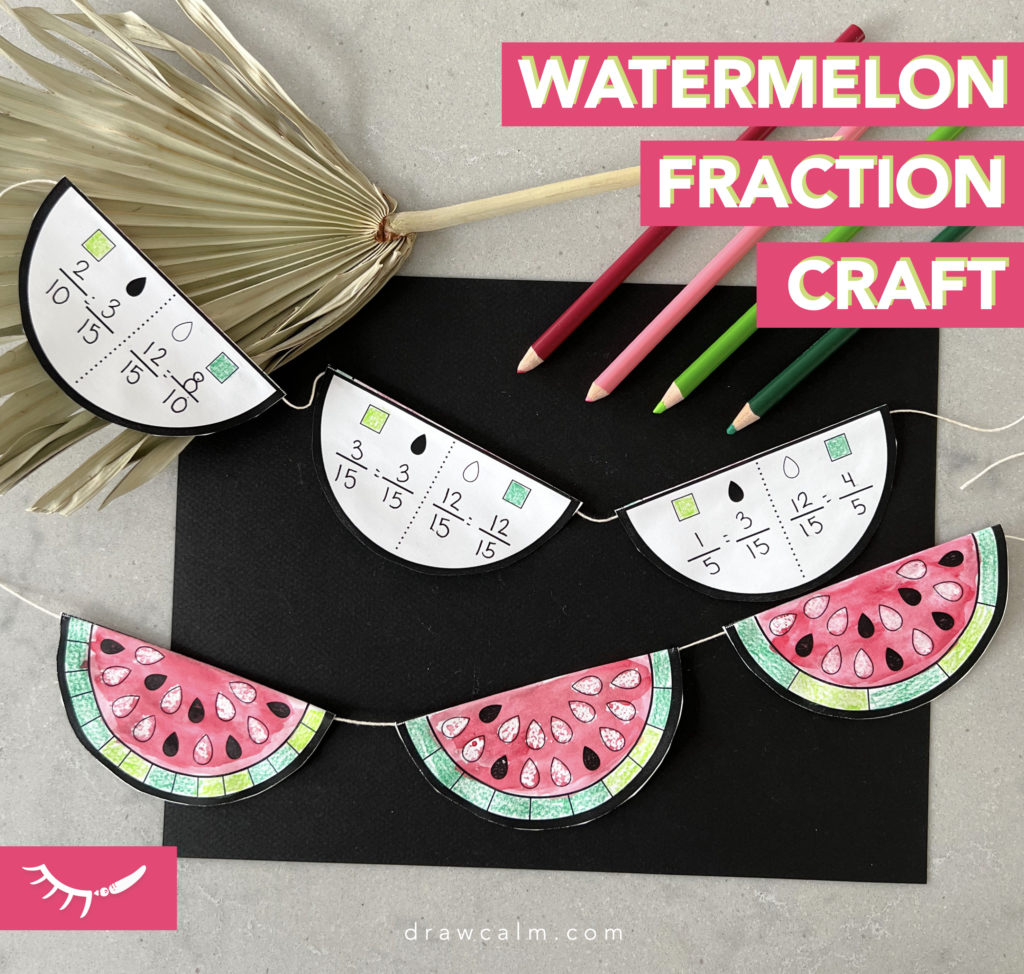
Prepping your Fraction Art and Craft
First, print out the compare fraction worksheet slices page.
Download from my TPT Store: Watermelon Garland: Reducing Fraction Worksheet – tpt
Download from my shop: Watermelon Fractions Garland: Reducing Fraction Worksheet
Each printable math fraction worksheet has 3 different watermelon slices. This equivalent fractions worksheet pdf is available in a variety of segments which are indicated on the bottom corner of the page.
Page combinations included:
/2 /4 /8
/3 /6 /9
/5 /10 /15
/8 /16 /24
There are also some simpler math fraction worksheets included to help differentiate lessons:
/1 /2 /3
/4 /5 /6
First, print the desired simplifying fraction worksheet. Then, collect necessary supplies.
Supplies:
-glue stick
-scissors
-colored pencils: 2 shades of green, and 2 shades of pink
(or if painting: a white wax crayon and pink watercolor paint)
-string
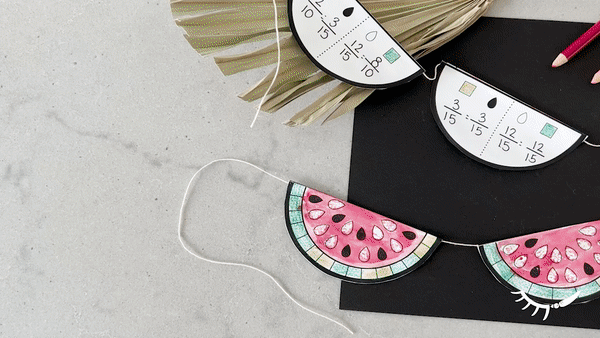
Simplifying Fraction Worksheet: 4 Options
The simplifying fraction worksheet can be printed in 4 different styles:
- The first is option seedless.
- The second option has blank seeds.
- The third option shows the same seed combination on each slice.
- And the fourth shows a variety seed combination on each slice.
(The last 2 options are best for reducing and simplifying fractions.)
Each option can be used in a slightly different way. Next, I will walk you through how to use each of the 4 options.
Option 1: Draw your Own Seeds
- First, pick 2 shades of green.
- Next, color the rind to create a fraction.
- Then, indicate what fraction was created using the other side of the watermelon slice.There are boxes provided to show which fraction is represented by which color.
- Lastly, create a fraction using the seeds. Either new fractions could be shown with the seeds, or students could draw an equivalent fraction to what the rind represents.
***If students are new to equivalent fraction the teacher could instruct them to create a specific fraction on the rind that they know can be reduced.
I demonstrated one of each in the instructional video. Firstly, on the left I created an equivalent fraction using the seeds, and added an equal sign to show that they were equivalent. Secondly, the watermelon slice on the right side I represented a separate fraction using the seeds, not equivalent to the fraction shown on the rind. Check out the video for more detail.
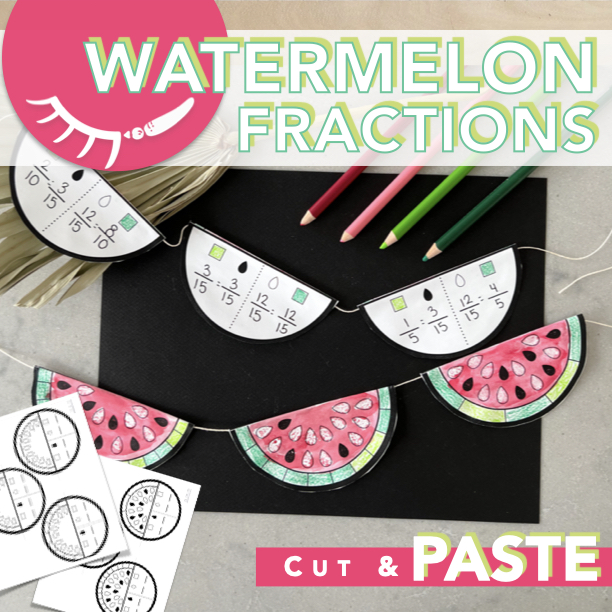
Option 2: Blank Seeds
- Follow the same steps 1-3 as explained above for option 1. Start by picking your shades of green. Second, color the rind. Third, write down the fraction that is represented.
- Color the seeds to build an equivalent fraction. For the blank seeds option each slice has the same number of seeds as the slice with the greatest number of segments.
For example: in the video each rind is split up into 5, 10, and 15 segments. Each watermelon slice has 15 seeds.
This was designed so that the seeds could easily be an equivalent fraction to what was represented on the rind. In this example The bright green shows ⅕, so the seeds became 3/15. For the dark green it represented ⅘ on the rind and 12/15.
- Next, students could try and make the same fraction on each of the slices as I did in this example, or they could build new fractions on each slice. If making the same fraction on each slice, start with the watermelon in the smallest number of sections. For example in this video I started with the slice cut into 5. This helps ensure that equivalent fractions can be made as the watermelon becomes sliced into more segments.
By looking at the rind and coloring the light green in the same space, it is easy to see visually that the light green sections take up the same amount of space, even though they are cut into more pieces. If following this version, each seed fraction would be the same in all 3 slices.
Option 3: Fraction Variety: Compare Fraction Worksheet
- First, count the seeds and record the seed fraction.
- Build an equivalent fraction using the rind segments. Or build a different fraction using the rind, depending on lesson objectives and ability.
- Color the rind to represent the fraction.
Option 4: Equivalent Fractions: Reducing Fraction Worksheet
- First count the seeds and record the seed fraction. For this option each slice will have the same seed fraction.
- Second, find the equivalent fraction using the rind segments. For the video example I started with the section cut into the least number of pieces. However, some students will find it easier for to start in the other direction.
- Lastly, color the rind. Similarly to the previous example, if the rind is colored in the same spots on each slice it is helpful in visualizing the equivalent fraction.
Finishing the Garland
To finish the garland there are 2 great options.
First, color the white seeds with a wax crayon. Then, use a watercolor wash over the top. As a result, anywhere the wax is present the paint will roll off.
The second option is to color the watermelon with pencil crayons or markers. To do this, color light pink close to the rind and then blend to darker pink towards the middle of the watermelon slice. In addition check out the video, I show how to do both options.
Assembling the Fraction Garland
Firstly, to assemble the fraction garland, start by separating each of the 3 slices. Then, cut roughly around each circle.
Next, fold the circle along the dotted line. Then hold the page up to the light to ensure it is lined up properly before cutting it out.
After that, cut around the circles.
Then, cut a piece of string long enough to hold the 3 slices.
After that, fold the string in half to find the middle.
After it is folded, open each slice, add glue to one side, then fold around the string. Place the first slice in the middle of the sting and then place the subsequent 2 on either side.
The watermelon slices can also be slid a bit along the string after they are glued if needed.
Finally, you are done! Lastly, find a place to display your beautiful watermelon garland!
I hope you enjoyed building this watermelon fraction garland! Lastly, I hope this compare fraction worksheet sparks lots of great discussions around fractions.
More Fraction Craft Ideas

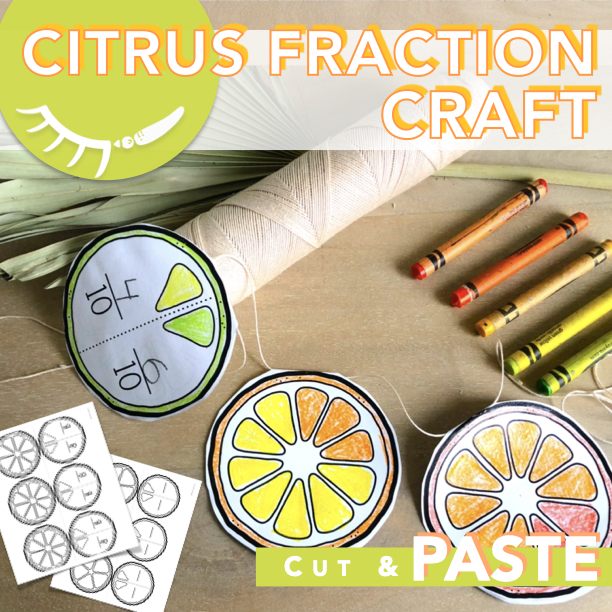
If you are looking for more math fraction crafts ideas check out:
Like I said, I am obsessed with paper garlands at the moment! 😉
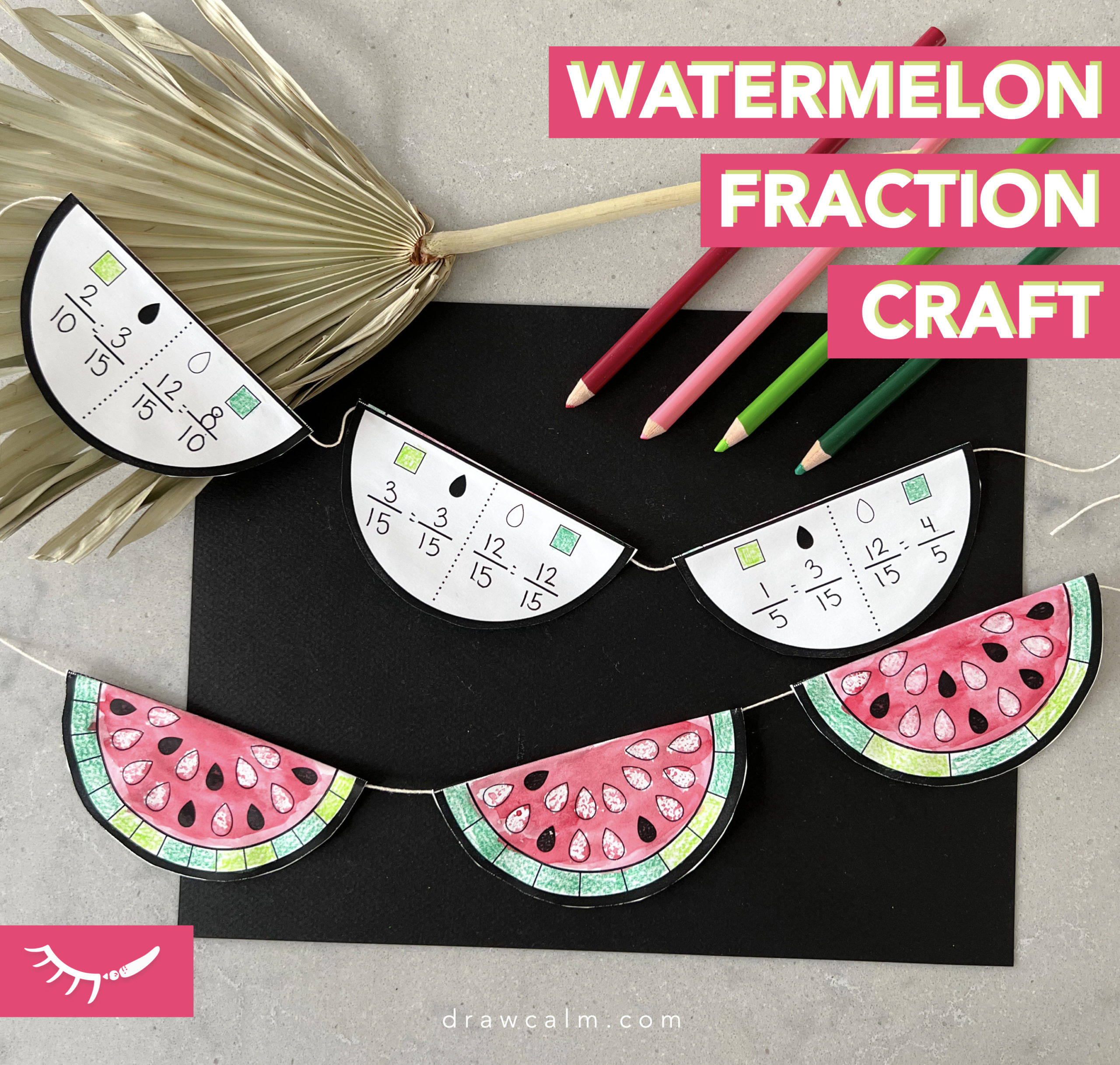

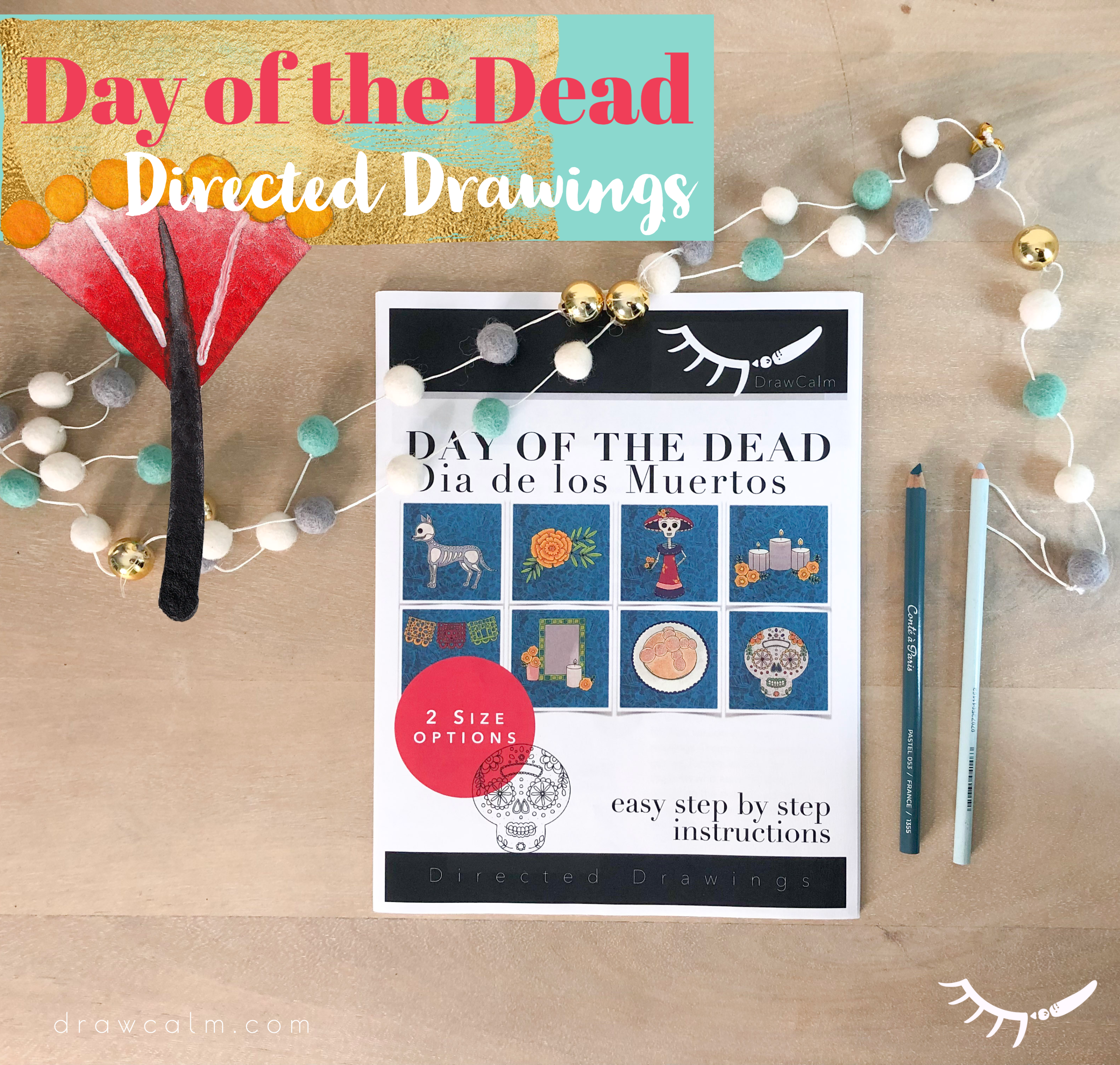
+ COMMENTS